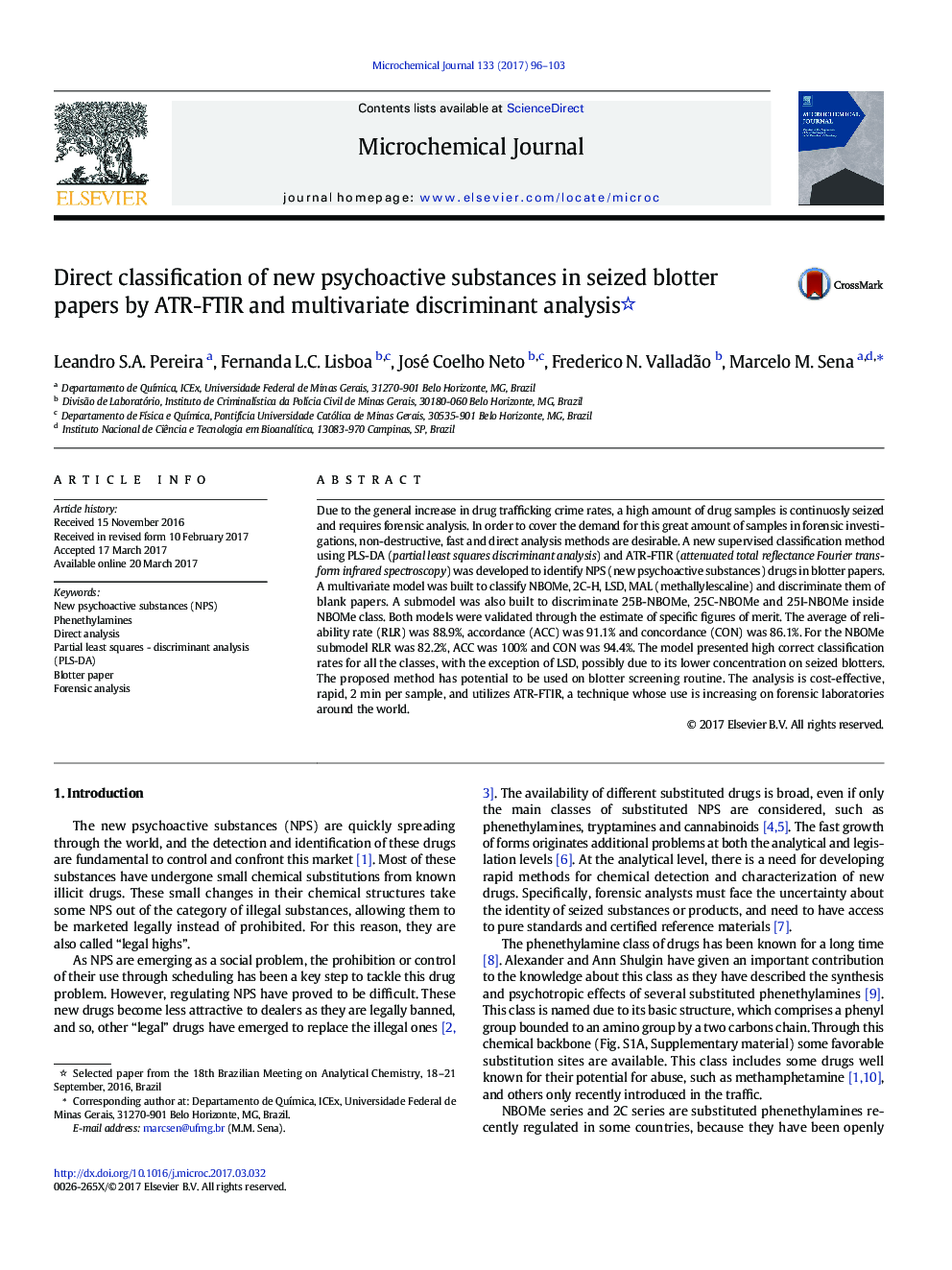| Article ID | Journal | Published Year | Pages | File Type |
|---|---|---|---|---|
| 5139005 | Microchemical Journal | 2017 | 8 Pages |
Abstract
Due to the general increase in drug trafficking crime rates, a high amount of drug samples is continuosly seized and requires forensic analysis. In order to cover the demand for this great amount of samples in forensic investigations, non-destructive, fast and direct analysis methods are desirable. A new supervised classification method using PLS-DA (partial least squares discriminant analysis) and ATR-FTIR (attenuated total reflectance Fourier transform infrared spectroscopy) was developed to identify NPS (new psychoactive substances) drugs in blotter papers. A multivariate model was built to classify NBOMe, 2C-H, LSD, MAL (methallylescaline) and discriminate them of blank papers. A submodel was also built to discriminate 25B-NBOMe, 25C-NBOMe and 25I-NBOMe inside NBOMe class. Both models were validated through the estimate of specific figures of merit. The average of reliability rate (RLR) was 88.9%, accordance (ACC) was 91.1% and concordance (CON) was 86.1%. For the NBOMe submodel RLR was 82.2%, ACC was 100% and CON was 94.4%. The model presented high correct classification rates for all the classes, with the exception of LSD, possibly due to its lower concentration on seized blotters. The proposed method has potential to be used on blotter screening routine. The analysis is cost-effective, rapid, 2Â min per sample, and utilizes ATR-FTIR, a technique whose use is increasing on forensic laboratories around the world.
Related Topics
Physical Sciences and Engineering
Chemistry
Analytical Chemistry
Authors
Leandro S.A. Pereira, Fernanda L.C. Lisboa, José Coelho Neto, Frederico N. Valladão, Marcelo M. Sena,
